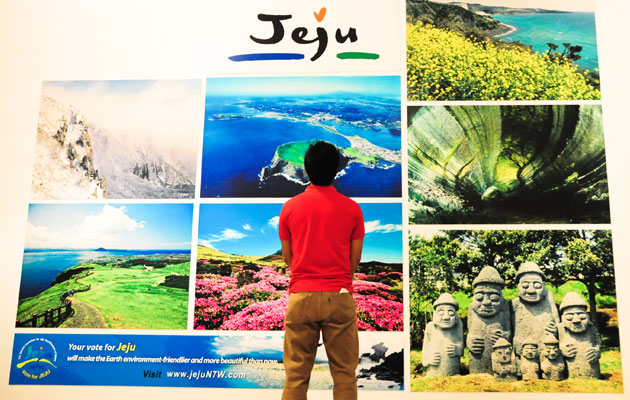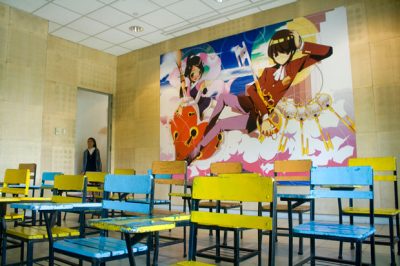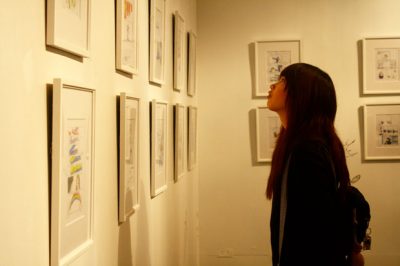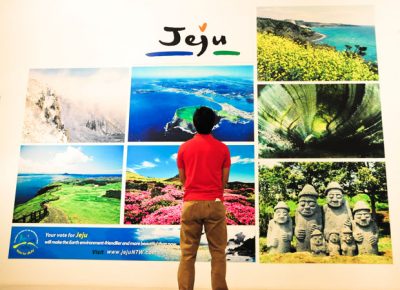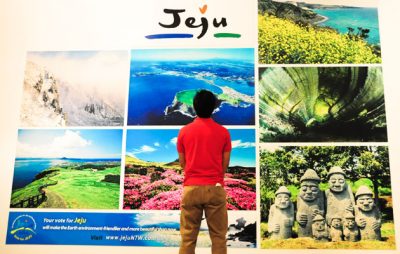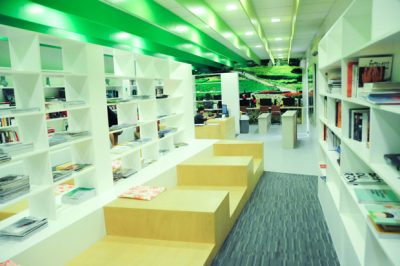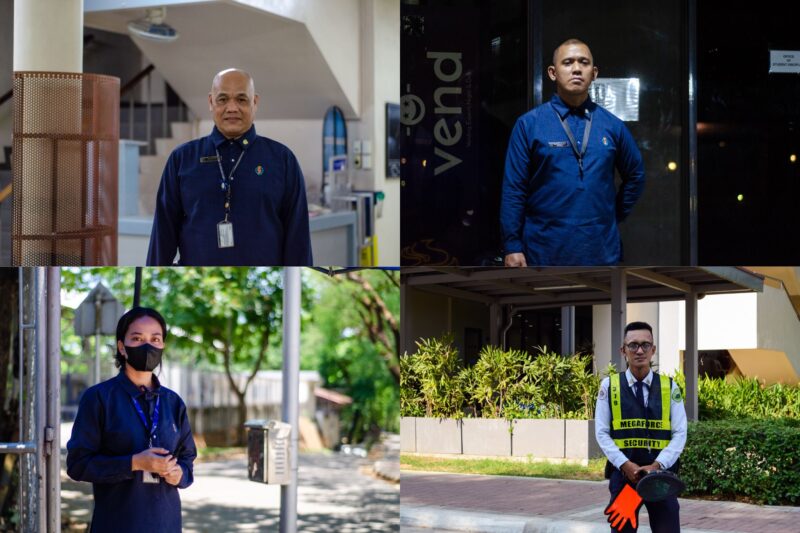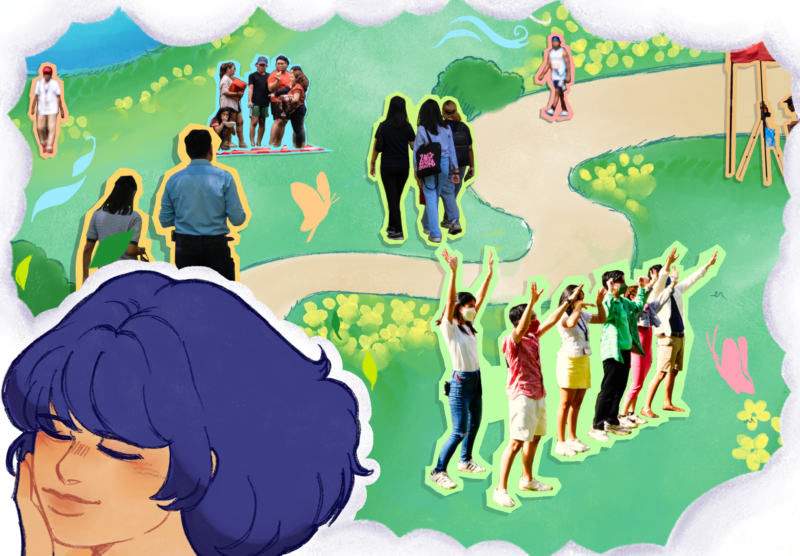After being suffocated by papers and tests, any student would find the semestral break a welcome breath of fresh air. It’s the time we catch up on TV shows, sleep, and maybe take a trip or two out of town. But while the immediate inclination is to jet off to foreign locales, cultural melting pots all over Metro Manila are waiting to be explored.
Ayala Museum
It’s always good to get in touch with one’s own roots before probing into others’, and it’s even better to touch on other cultures in the process. The Ayala Museum allows Filipino students to do just that—and more. Packed with an array of fine arts collections and historical exhibits, a tour around its four-story building guarantees a deeper grasp of Philippine history and the surrounding cultures that influenced it.
Aside from transitory feature art shows, the museum holds conferences and gallery talks, and offers programs like storybook publication and gallery discussions. The success of their events such as the recently concluded Manga Realities: Exploring the Art of Japanese Comics Today can be attributed to the museum’s efforts towards foreign directions.
But despite its multi-cultural feel, the museum ties it all back to the Philippines: everything there holds historical value to Philippine culture.
Forming the core of the historical displays are sixty handcrafted dioramas detailing the Philippines’ history and a unique boat gallery exhibiting the development of Philippine maritime trade. The displays in this historical section culminate with a multimedia presentation chronicling the events leading to the 1986 People Power Revolution.
Ayala Museum’s fine arts collection features galleries celebrating the works of three pioneers of Philippine art: Luna, Amorsolo and Zobel. Meanwhile, its Crossroads of Civilizations exhibit is perhaps the most fascinating in the country; the tripartite exhibit showcases garments from the colonial period (Embroidered Multiples), trade ceramics (A Millennium of Contact) and a stunning collection of intricate gold artifacts from the pre-colonial era (Gold of Our Ancestors).
With all these treasures reflecting the Philippines’ rich history, taking pride in one’s culture should be easy for Filipinos today. As Lauren Laudico (IV AB Comm) puts it, “[The Ayala Museum] makes me proud. It makes me want to pull foreigners in and say, ‘Hey! Get a load of my country!’” To paraphrase the Gold of Our Ancestors tagline, our culture is one the world has waited a thousand years to see.
Korean Cultural Center
In recent years, the influence of Korean culture around the world seems to have reached epic proportions. In Metro Manila alone, Korean salons, make-up franchises and restaurants are familiar sights on the streets and inside malls; and whether we admit it or not, catchy K-Pop songs have gotten us to sing along and tap our feet.
This sudden increase in the popularity of Korean culture (known as Hallyu or the Korean Wave) is what inspired the Ministry of Culture, Sports and Tourism of the Republic of Korea to open cultural centers around the world.
Located at the Mancor Corporate Center in Bonifacio Global City, Metro Manila’s newly opened Korean Cultural Center (KCC) caters to Filipinos interested in learning more about Korea. Its deceivingly small entrance opens up to reveal a large space dedicated to an education on Korean heritage. According to KCC Director Seong Un Hwang, the aim is “to deepen the understanding and appreciation of Korean culture among Filipinos by providing diverse cultural programs and events.”
One of the main features of the KCC is its library, which houses more than 7,000 books and media titles. Here, bright lights reflect off the green ceilings and low tables set the mood for the perusal of Korean texts. The KCC library also has copies of concerts, dramas, films and documentaries pertaining to Korea.
These media resources, along with events like the upcoming Pinoy K-Pop Idol competition, are a means of reaching out to those attracted to Korea’s entertainment industry. Regular film screenings are held at the Center’s Korean Wave Hall. The KCC also offers K-Pop dance and singing classes.
Paolo Abad (IV AB Com), who visited the KCC while doing research for his thesis, shares, “There’s a huge collection of Hallyu-related DVDs and audio CDs. [The center tries] to highlight traditional culture, but you still get the impression that they flaunt the popularity of the Korean Wave—which is understandable, of course.”
Despite this apparent focus on modern media, the KCC also pays homage to traditional Korean heritage through authentic yet inexpensive classes focused on language, hansik (Korean food) cooking, traditional dance, danso (Korean flute), and Taekwondo.
Language centers
Many regard language as the essence of communication; it connects people from all around the world. With the society of expatriates and exchange students growing in Manila comes a league of language centers that focus on language, yet share a culture beyond the lexicon.
A slew of prominent language centers have stationed themselves in Metro Manila, with Japan Foundation Manila (JFM), Goethe Institut and Alliance Francaise de Manille (AfM) being the most sought after by spirited language lovers.
As JFM’s senior program officer Cecille Aquino puts it, the aim of these language centers is to connect language speakers globally through communicative competence with fellow linguists. Thus, language centers offer classes of different styles to meet the needs of the prospective linguist.
For example, AfM not only offers basic vernacular courses for kids and adults, but holds special courses that round out the skills of budding linguists through their Sing in French, Write in French and Culture in French classes.
Meanwhile, Goethe Institut student Ange Pamintuan reminisces about her experiences on an exchange conducted by the institute. “It was challenging talking to the German students,” she shares. “But it was fulfilling to use the German I know, to talk to them about food using what I read in Essen & Trinken [Eat & Drink, a German-language magazine].”
While learning a new language may seem daunting at first, it’s a doable task. In fact, French exchange student Nathan Gailly says that the Ateneans he has met while giving French lessons for the Ateneo Lingua Ars Cultura picked up the language surprisingly well.
- Photo by Cristina T. Tantengco
- Photo by Cristina T. Tantengco
- Photo by Sarah N. Aquino
- Photo by Sarah N. Aquino

